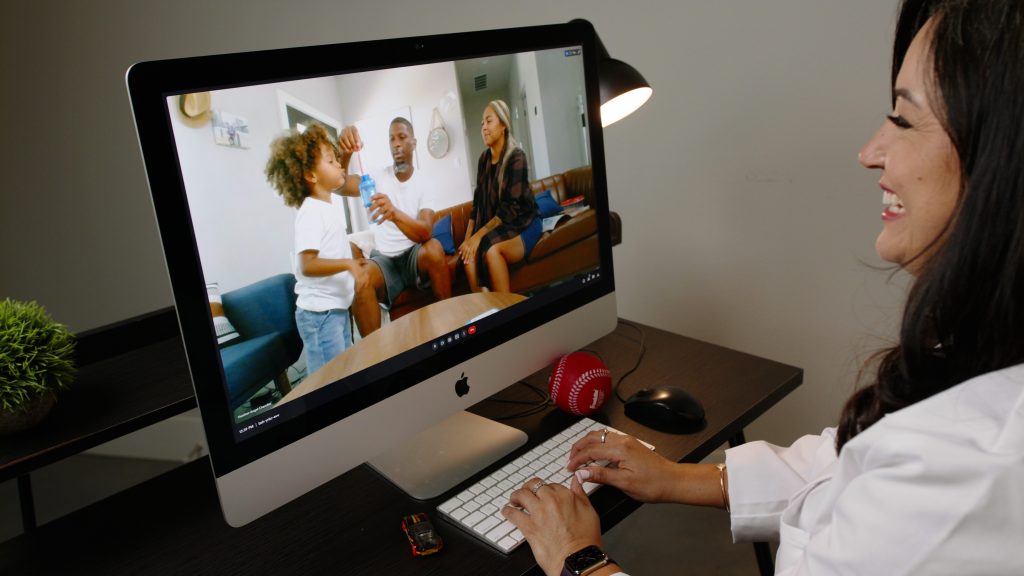Disclaimer :: This article is sponsored by As You Are to share its new services with Texas families. The article writer created this resource based on her own experiences as a mother parenting a child with autism.
Three weeks ago, my six-year-old son was diagnosed with autism spectrum disorder (ASD). However, this is a journey we’ve been traveling and wondering about for years. The road to get to this diagnosis wasn’t quick, nor was it completely unexpected — yet still, it was an overwhelming experience. Any mother, especially one who has been through this process or who is looking down the dark tunnel of diagnosis, can understand.
If you have a child and you are wondering if autism is part of your child’s story, please keep reading. I hope our story can help you.
Is It Autism?
Nathan was born with neonatal abstinence syndrome. This means he was born experiencing withdrawal symptoms from opioids.
I met him for the first time when he was two years old when I became his foster mom. Since that time, he has never met a milestone. He didn’t speak until he was three. He didn’t walk until he was two.
Each time I filled out the autism spectrum questionnaire at the pediatrician’s office, I would wave away all those failures as a result of his in-utero trauma. He would catch up, I thought. The fact that he didn’t play make-believe or talk at the same time as other kids was meaningless . . . right? Maybe he has ADHD?
While your story or list of worries may not be identical to mine, these young toddler years mean there is often a wait-and-see approach because so much development is happening at different rates and in different waves. Don’t be discouraged! Autism diagnosis in toddlers is very difficult and challenging.
>> RELATED READ :: Finding the Words: Explaining Autism to Neurotypical Kids <<
Cue More Waiting
Nathan’s behaviors intensified as he got older. He constantly clapped, hummed, banged his head into objects, repeated phrases from movies or books, and other red flags that indicated he was neurodivergent. We sought help from his pediatrician.
Our “wait and see” turned into “we do see an issue,” but then “we still need to wait.” Wait for openings. Wait for diagnostics. Wait for reports. Wait for appointments. Wait for diagnosis. Over a six-month time period we scheduled, attended, and received the results of Nathan’s diagnostic testing.
Even though we are very new to this diagnosis, I wish I knew a year ago what I know now. It’s a slow process. It’s a long wait . . . and you have to parent to the best of your abilities during that time without services and support.
Here are things I recommend during the waiting process:
- Video behaviors on your phone. It is kind of like taking your car to a repair shop for an odd noise. You get to the repair shop and suddenly the strange noise no longer exists. My son’s challenges present in times of stress, struggle, transition, or when he encounters a trigger. Videos are GREAT to show doctors.
- Use pictures rather than words. I use picture cards as we transition from one activity to another such as bath time, dinner, school, etc. I print these off and use magnets to keep them on our refrigerator.
- Create a sensory corner. It doesn’t have to be fancy or aesthetically pleasing. Ours include fidget toys, a weighted blanket, and books.
- Keep a fairly strict schedule with expectations of routine. Bath time is always after dinner, for instance. It can be as straightforward as having the same meals on certain nights of the week. For example, every Monday night we have tacos.
- Find a community of mothers with children on the spectrum. No one understands better than we do, and you will need support. I recommend Autism Parents Support: Texas Chapter.
At the time of publication, we are on a waitlist for ABA therapy. Nathan is on medications for ADHD, which does help as he was diagnosed with ADHD as well. But he is six years old, and our family is still waiting for full resources.
>> RELATED READ :: IEPs, 504s, & How to Advocate for Your Kid’s Learning Differences <<
As You Are
Which brings me to this point . . .
Other than curbside groceries, another silver lining from the COVID pandemic has been telehealth appointments. While you can’t get stitches or take an X-ray virtually, you can have your child evaluated for autism spectrum disorder if you live in Texas, Florida, Georgia, Alabama, Ohio, Kentucky, Pennsylvania, and New Jersey.
As You Are is a virtual clinic providing autism diagnostic evaluations for kids between 16 months and 10 years old, using exclusively telehealth appointments.
 My first question when I was introduced to As You Are was: Does it accept Medicaid? All four of my children are on Medicaid. If you live in Texas and have Medicaid, you know the overwhelming challenge it can be to find specialists in your area who accept that insurance. As You Are eliminates transportation and cost as barriers to service, too.
My first question when I was introduced to As You Are was: Does it accept Medicaid? All four of my children are on Medicaid. If you live in Texas and have Medicaid, you know the overwhelming challenge it can be to find specialists in your area who accept that insurance. As You Are eliminates transportation and cost as barriers to service, too.
Don’t have Medicaid? That is okay. It accepts insurance including TRICARE East.
An early diagnosis can lead to a more peaceful home with better understanding of how your child’s brain works. And as a mom, you can make different choices for your child the more you know.  As You Are is a virtual clinic providing autism diagnostic evaluations for kids between ages 16 months and 10 years old, using exclusively telehealth appointments. As You Are is breaking geographic barriers for families sitting on long waitlists, helping diagnose more children early in development. For the latest info, follow As You Are on Facebook, Instagram, LinkedIn, and Twitter.
As You Are is a virtual clinic providing autism diagnostic evaluations for kids between ages 16 months and 10 years old, using exclusively telehealth appointments. As You Are is breaking geographic barriers for families sitting on long waitlists, helping diagnose more children early in development. For the latest info, follow As You Are on Facebook, Instagram, LinkedIn, and Twitter.














